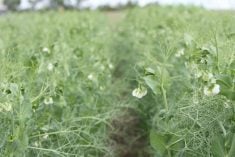Open interest in the Winnipeg feed barley contract is about as easy to find as smiles on the faces of Saskatchewan Roughrider fans this week.
And the moribund nature of the contract has once more raised fears that another crop market will slip into the shadows of private, unreported trade.
“It’s been disappointing,” said Union Securities broker Ken Ball about the feed barley contract, which was reformed and relaunched earlier this year.
“It’s struggling and it’s another market that looks like it’s going to go the way of the flax and the feed wheat contracts.”
Read Also

Fendt takes a combine on the road in the U.S.
Putting an Ideal combine in fields across different regions has given the brand a chance to prove that the combine is capable of performing well in a variety of conditions.
In the past decade, the ICE Futures Canada commodity exchange in Winnipeg has delisted its oats, feed wheat, feed peas and flax contracts, leaving it with just its mainstay canola contract and the lesser-used feed barley contract.
Western barley has long had a commercial basis and adequate trade to keep it alive, but it has gone through a number of incarnations as exchange officials try to keep it relevant and stop the gradual decline of volume.
In 2006, the exchange revamped the contract to a Saskatoon par region, anticipating that the federal government would break the Canadian Wheat Board’s barley monopoly.
But the monopoly survived and the new contract, designed to meet the needs of feed barley exporters, domestic maltsters and farmers selling into the domestic feeding industry, became less useable by feedlot alley.
The 2009 re-revamp returned the contract to a Lethbridge focus and it changed some technicalities so more users could participate.
Some users tried to use the contract, but open interest trickled away and trade is light. A commodity index fund that had been using it stopped.
“I’m sure that didn’t help,” said Ball. “It’s a shame if we lose (the contract) because it’ll be another market that will become somewhat invisible and I think most growers would find that to be not a good thing.”















